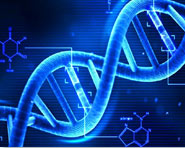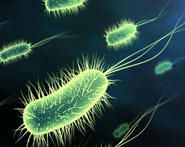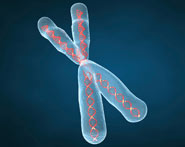


 النبات
النبات
 الحيوان
الحيوان
 الأحياء المجهرية
الأحياء المجهرية
 علم الأمراض
علم الأمراض
 التقانة الإحيائية
التقانة الإحيائية
 التقنية الحيوية المكروبية
التقنية الحيوية المكروبية
 التقنية الحياتية النانوية
التقنية الحياتية النانوية
 علم الأجنة
علم الأجنة
 الأحياء الجزيئي
الأحياء الجزيئي
 علم وظائف الأعضاء
علم وظائف الأعضاء
 الغدد
الغدد
 المضادات الحيوية
المضادات الحيوية|
Read More
Date: 24-3-2016
Date: 24-3-2016
Date: 23-3-2016
|
By testing the activity of antibiotics, they can be grouped by the type of microorganisms they kill or by their source. Antibiotics are either antibacterial or antifungal; they attack bacterial or fungal pathogens, respectively. (Antibiotics are not active against viruses, which must be treated with antiviral drugs, or protozoa, which are treated with antiprotozoal drugs.)
Broad-spectrum antibiotics work against a wide range of gram-positive and gram-negative bacteria. (A gram reaction is determined by the manner in which various bacteria accept a stain in the Gram stain procedure.) Narrow-spectrum antibiotics are effective against a smaller range of microorganisms. Often narrow-spectrum antibiotics attack gram- positives or gram-negatives, but not both. Some are narrower still and attack only one type of bacteria, such as antibiotics that target the tuberculosis pathogen.
Antibiotics terminology varies regardless of the type of microorganisms inhibited. They may be microbicidal or microbistatic. Microbicidal antibiotics kill the target pathogen; microbistatic antibiotics merely inhibit the growth of a pathogen but might not kill it.
Physicians select these drugs on the basis of the pathogens they kill. The source of an antibiotic is less important to them. Nevertheless, antibiotics have customarily been grouped according to source for many years..
Streptomyces bacteria are a source of many antibiotics. Several species are known to make specific antibiotics, but there are more than 500 Streptomyces species and many have not yet been studied for antibiotic production. Since Fleming's day, more bacteria than molds have been employed in antibiotic production for human and veterinary medicine., only Penicillium and Cephalosporium are molds.
Chemists working on the synthesis of new antibiotics classify these compounds by structure. This method of categorization makes sense because antibiotic structure usually relates to antibiotic activity. For example, antibiotics of various structures may selectively target membranes, proteins, or genetic material inside a cell. The major groups by structure are the tetracyclines, penicillins, cephalosporins, sulfonamides, aminoglycosides, quinolones, and macrolides.



|
|
|
|
للعاملين في الليل.. حيلة صحية تجنبكم خطر هذا النوع من العمل
|
|
|
|
|
|
|
"ناسا" تحتفي برائد الفضاء السوفياتي يوري غاغارين
|
|
|
|
|
|
|
نحو شراكة وطنية متكاملة.. الأمين العام للعتبة الحسينية يبحث مع وكيل وزارة الخارجية آفاق التعاون المؤسسي
|
|
|